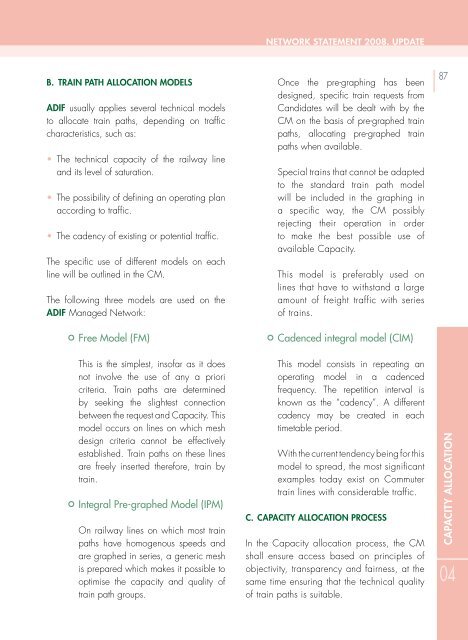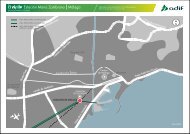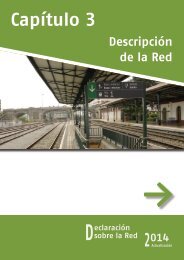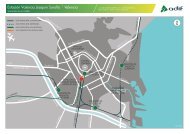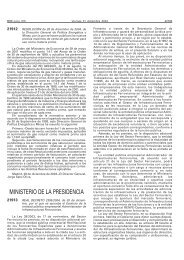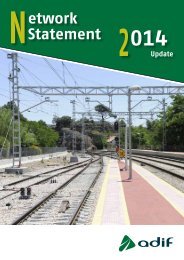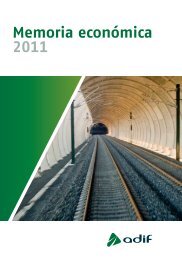Untitled - Adif
Untitled - Adif
Untitled - Adif
You also want an ePaper? Increase the reach of your titles
YUMPU automatically turns print PDFs into web optimized ePapers that Google loves.
NETWORK STATEMENT 2008. UPDATEB. TRAIN PATH ALLOCATION MODELSADIF usually applies several technical modelsto allocate train paths, depending on trafficcharacteristics, such as:• The technical capacity of the railway lineand its level of saturation.• The possibility of defining an operating planaccording to traffic.• The cadency of existing or potential traffic.The specific use of different models on eachline will be outlined in the CM.The following three models are used on theADIF Managed Network:• Free Model (FM)This is the simplest, insofar as it doesnot involve the use of any a prioricriteria. Train paths are determinedby seeking the slightest connectionbetween the request and Capacity. Thismodel occurs on lines on which meshdesign criteria cannot be effectivelyestablished. Train paths on these linesare freely inserted therefore, train bytrain.• Integral Pre-graphed Model (IPM)On railway lines on which most trainpaths have homogenous speeds andare graphed in series, a generic meshis prepared which makes it possible tooptimise the capacity and quality oftrain path groups.Once the pre-graphing has beendesigned, specific train requests fromCandidates will be dealt with by theCM on the basis of pre-graphed trainpaths, allocating pre-graphed trainpaths when available.Special trains that cannot be adaptedto the standard train path modelwill be included in the graphing ina specific way, the CM possiblyrejecting their operation in orderto make the best possible use ofavailable Capacity.This model is preferably used onlines that have to withstand a largeamount of freight traffic with seriesof trains.• Cadenced integral model (CIM)This model consists in repeating anoperating model in a cadencedfrequency. The repetition interval isknown as the “cadency”. A differentcadency may be created in eachtimetable period.With the current tendency being for thismodel to spread, the most significantexamples today exist on Commutertrain lines with considerable traffic.C. CAPACITY ALLOCATION PROCESSIn the Capacity allocation process, the CMshall ensure access based on principles ofobjectivity, transparency and fairness, at thesame time ensuring that the technical qualityof train paths is suitable.87CAPACITY ALLOCATION04


